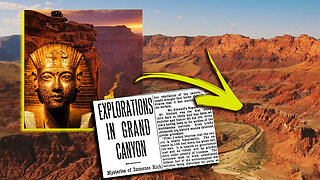Premium Only Content

How an Island is Formed
How an Island is Formed?
Summary About an Island:
An island is a piece of land that is surrounded by water, smaller than a continent, and not connected to any other landmass. Islands can vary greatly in size, ranging from tiny islets to large landmasses such as Australia and Greenland.
Islands are formed by a variety of geological processes, including volcanic activity, tectonic plate movement, and erosion. They are often home to unique ecosystems and species that have evolved in isolation from mainland environments. Island ecosystems can be fragile, and many face threats from human activity, including deforestation, habitat destruction, and invasive species.
Islands are also important for human habitation and commerce, with many being used for agriculture, tourism, and fishing. Island cultures are often distinctive, shaped by their isolation and unique environments, and can have a rich history and cultural heritage.
Overall, islands are diverse and fascinating environments that offer unique opportunities for scientific exploration and human discovery.
#NASA #Science #Technologgy #Earth #Temprature #Information #Weather #News #Rumble #Tech #Space #Intresting #2023 #Island
-
 LIVE
LIVE
Game On!
14 hours agoNFL Insiders Reveals SHOCKING Draft News!
12,638 watching -
 LIVE
LIVE
BEK TV
22 hours agoTrent Loos in the Morning 4/17/2025
6,134 watching -
 1:00:02
1:00:02
Dad Dojo Podcast
13 hours ago $1.61 earnedEP28: Teen Stabbed At Track Meet
5.88K3 -
 13:49
13:49
Mrgunsngear
12 hours ago $3.55 earnedHow many PUBG Cast Iron Skillets Does It Take To Stop A Bullet?
12K11 -
 12:01
12:01
Clownfish TV
18 hours agoHollywood HELLSCAPE: L.A. is the New DETROIT?!
13.5K16 -
 16:05
16:05
Nick Freitas
13 hours agoSaving a Billion a Day
11.8K3 -
 16:49
16:49
CarlCrusher
1 day agoBizarre Secret Mysteries of the Grand Canyon and Colorado River Badlands
13.2K6 -
 28:57
28:57
Esports Awards
17 hours agoVeracity From Unsung Hero to International Esports Host | Origins Podcast #3
10.8K1 -
 6:38
6:38
The Official Steve Harvey
19 hours ago $1.06 earnedMy accountant died... I owed 22 million dollars 😱
15.2K9 -
 18:05
18:05
Degenerate Jay
21 hours ago $1.87 earnedThis Is Ruining Video Game Development
30.6K5